Use of grassland herbicides post drought conditions
|
Wait for grass growth to resume post return of adequate soil moisture and cooler temperatures before applying grassland herbicides; this reduces the risk of selectivity effects. Weeds like docks, nettles and thistles will likely have flowered and be setting seed. It will be beneficial to top them and apply a selective herbicide to the regrowth 2 to 3 weeks later. A top dressing to stimulate active growth can also help. At this stage of the season, it is advisable to apply herbicides at full label rates for optimal effectiveness.
|
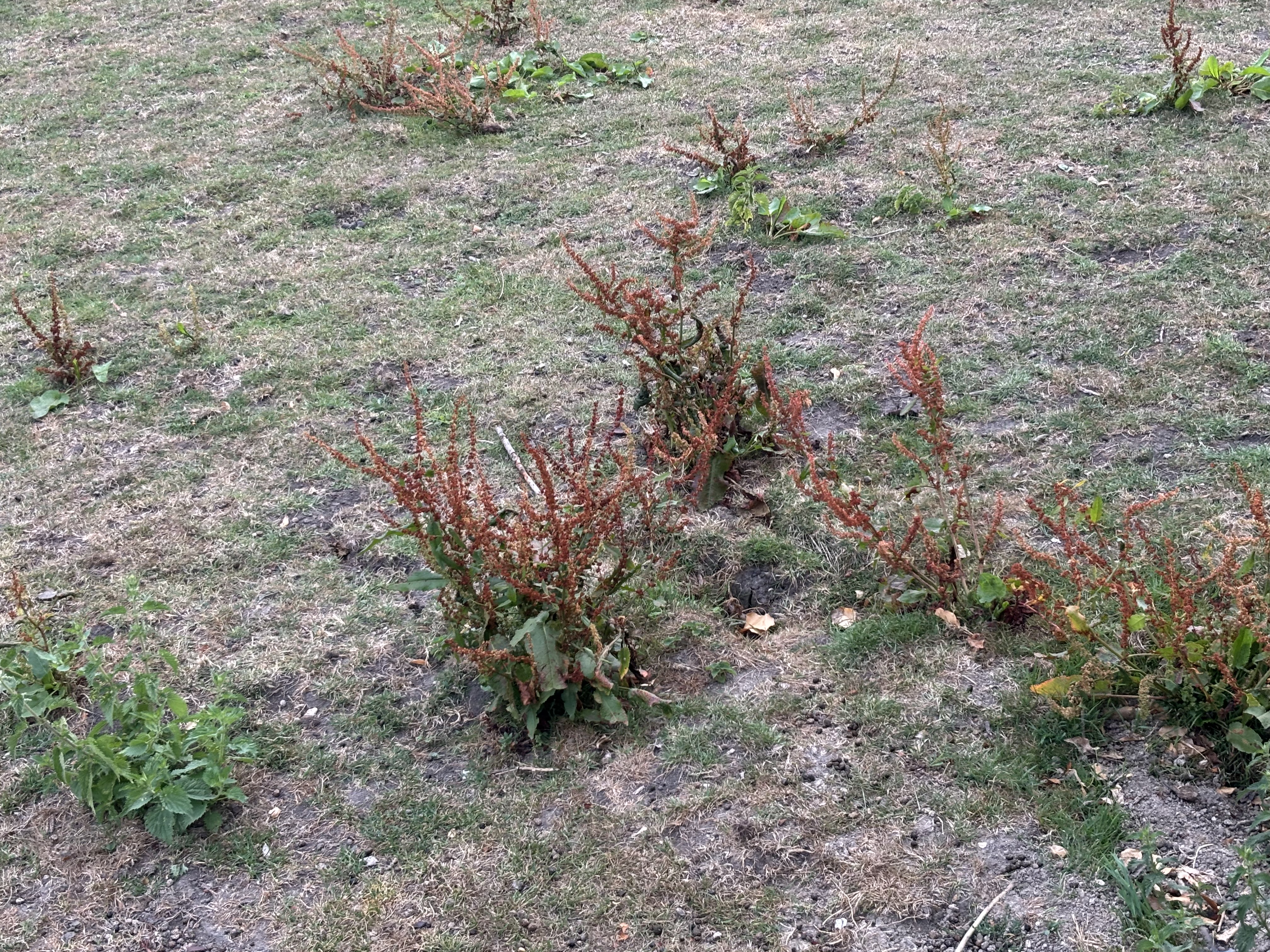
|
Dock control between silage cuts
|
Docks that re-emerge 2 to 3 weeks after cutting are at an optimal size for spraying and securing high levels of control.
With warmer temperatures and reasonable soil moisture, re-growth will be good so if clover is present in the sward use ProClova® XL. If clover is not a concern, then use
|
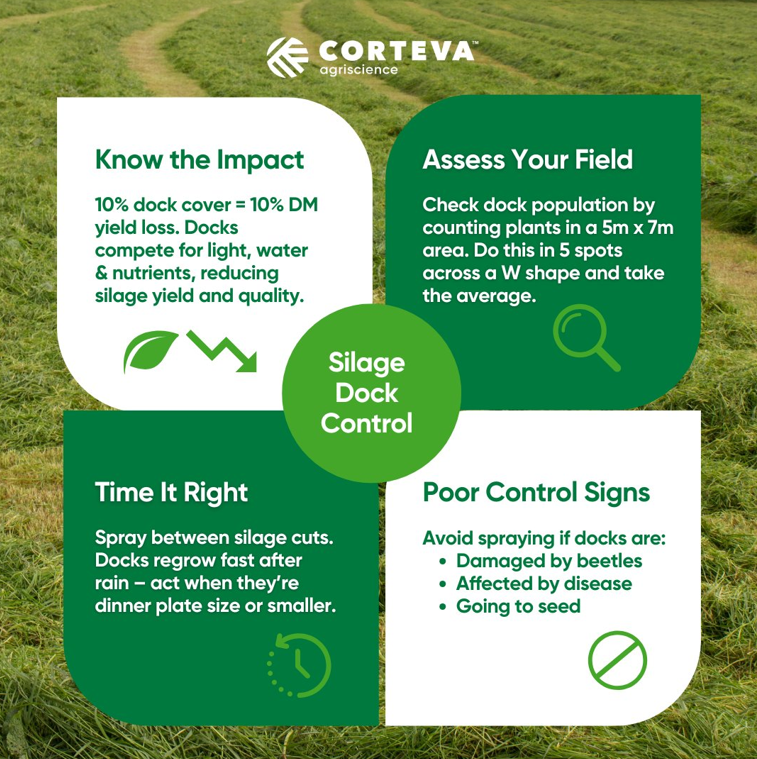
|
Stewardship and use of boom applied aminopyralid containing grassland herbicides
|
An important reminder for all users of aminopyralid containing products. Restrictions on use of any product containing aminopyralid with respect to subsequent manure management must be understood. Two critical requirements:
- Use is permitted only on grassland grazed by cattle and sheep.
- If manure is collected from animals that have consumed grass that has been treated with aminopyralid, then that material MUST stay on the farm of origin.
|
Guidance for ragwort control
|
At this time of year, many ragwort plants have grown beyond a suitable growth stage to spray. Ragwort is a biennial plant – those plants flowering now will subsequently die. As a result, topping will have minimal effect, and with the current hot and dry weather, livestock may need to be kept out of the field for an extended period until the plant material has fully decayed.
It is a better idea to leave ragwort control until next spring and spray the new seedling plants and those that have survived winter once they have reached an optimal size.
Forefront® T is the most effective selective herbicide to control ragwort in fields grazed by cattle or sheep. Treated at the rosette stage, ragwort will senesce quickly. Exclude grazing animals from treated areas until there is no visible sign of the dead weed.
|
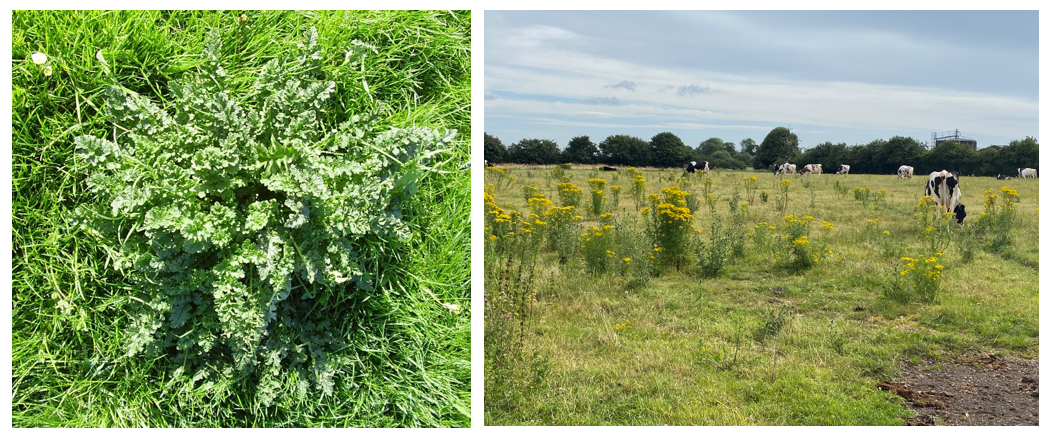
|
Maximising your maize silage
|
With many maize crops establishing well, it is worth planning ahead and considering what the ideal silage inoculant might be. Pioneer® inoculants are able to improve the efficiency of the acid fermentation, reduce heating, and raise fibre digestibility.
Select the one that fits your maize needs:
- Pioneer Brand 11A44 and 11A44 Rapid React delivers significant improvement of aerobic stability; it suits situations where maize has very high dry matter and there is a very high risk of aerobic spoilage.
- Pioneer Brand 11C33 Rapid React contains heterofermentative bacterial strain LN4637 which converts lactic acid into acetic acid and propandiol. 11C33 is an all-round ensiling agent which is designed to increase ensiling efficiency and improve the aerobic stability of silage.
- Pioneer Brand 11CFT is a patented inoculant for maize silage with unique fibre technology which reduces dry matter losses by rapidly lowering pH. It contains a novel strain of enzyme producing Lactobacillus buchneri to improve fibre digestibility, significantly reducing aerobic losses at feed out.
|
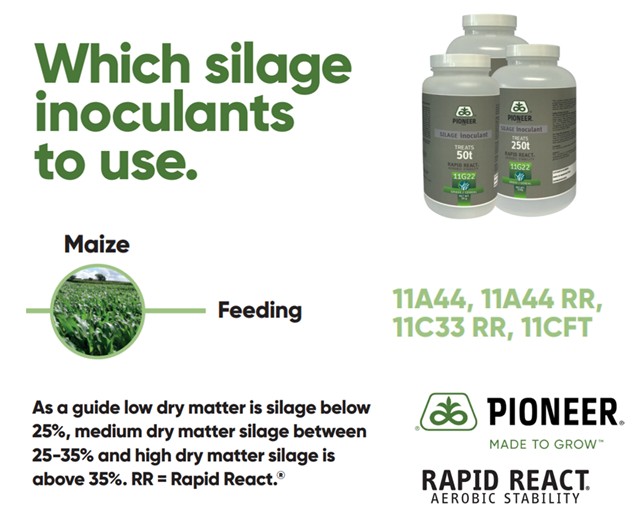
|
Managing thistle populations
|
Many thistles in grazing pastures are now at flowering or a post flowering stage so where you seek control, top them and wait for new plants to emerge and spray some 2 to 3 weeks later once they have reached 20cm across or high.
Use Thistlex® at 1.0L/ha in 200L water. Thistlex will give excellent control of both creeping and spear thistles. It will also give good control of nettles.
|
Optimal growth stage for spraying Top and spray regrowth
|
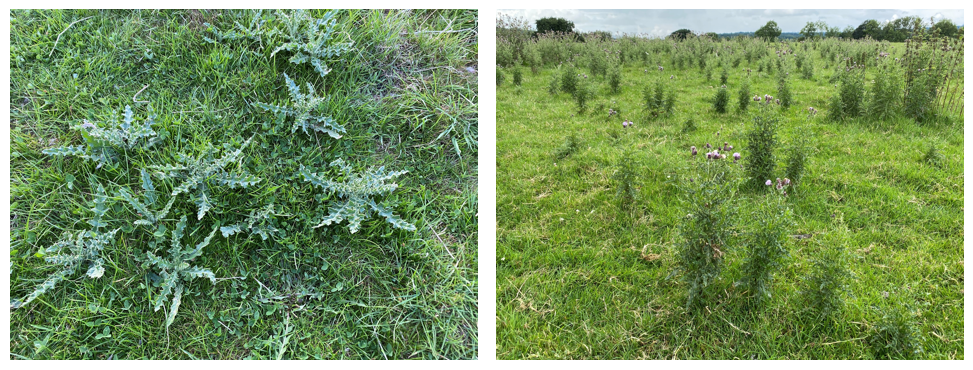
|
Controlling weeds in newly sown leys where clover is present
|
ProClova® XL has a label that support use in newly sown leys up to 31st July.
Consequently, where you have a weed problem and seek to preserve clover populations, plan an application of ProClova at 85g/ha in a tank mix with 165 ml/ha of XL adjuvant.
Where you want to control weeds in newly sown leys after this date, then Pastor® Trio and Envy® are suitable options, but these are not clover safe.
|

|
Spot treatment of grassland weeds with a knapsack and Grazon Pro
|
The use of knapsack sprayers plays a valuable role in grassland weed management. Professional-use products are available for knapsack application to achieve high levels of control of tough-to-manage weeds. Weeds such as docks, nettles, thistles, brambles, gorse and broom.
Grazon®Pro is the market leading solution for knapsack weed control. It delivers excellent control of troublesome weeds such as docks, thistles, nettles, bramble, gorse and broom. Each pack comes with a free measuring cup!
|
Key label statements:
- Apply 60ml in 10L water.
- Apply between 1st March and 31st October.
- Rainfast in 2 hours. Do not use as a boom application
- Post-spraying stock exclusion of just 7 days (longer where poisonous weeds, such as ragwort, are present).
|

|
|
|
Q: Can Grazon® Pro be applied through a weedwiper?
A: No. Currently only glyphosate has an approval for this application method.
Q: What PPE must I wear when spraying Corteva herbicides that have an approval for knapsack application?
A: You must wear a coverall, gloves and boots when spraying. When handling concentrate, you must also wear face protection (a face shield).
|
|
|
If you need technical advice or support, we are here to help.
For all enquiries about inoculants, please contact Andy Stainthorpe using the contact details below:
Andy Stainthorpe
Mobile: +44 7801 183234
For technical enquiries concerning Corteva herbicides, biostimulants and nitrogen stabilisers, please contact Liz Glynn or the Hotline using the contact details below:
Liz Glynn
Mobile: 086 844 5306
|
Want to hear more from us?
|
Update your preferences and tailor your choices to make sure you receive the communications that are right for you. Don't forget to enter into our monthly prize draw by ticking the box before submitting to be in with the chance to win!
You can also stay in the loop with all the latest updates by following @CortevaIE on X and Facebook.
|

|
|
|
10 IASIS Points will be awarded for those subscribing to the Forage Agronomy Update.
|